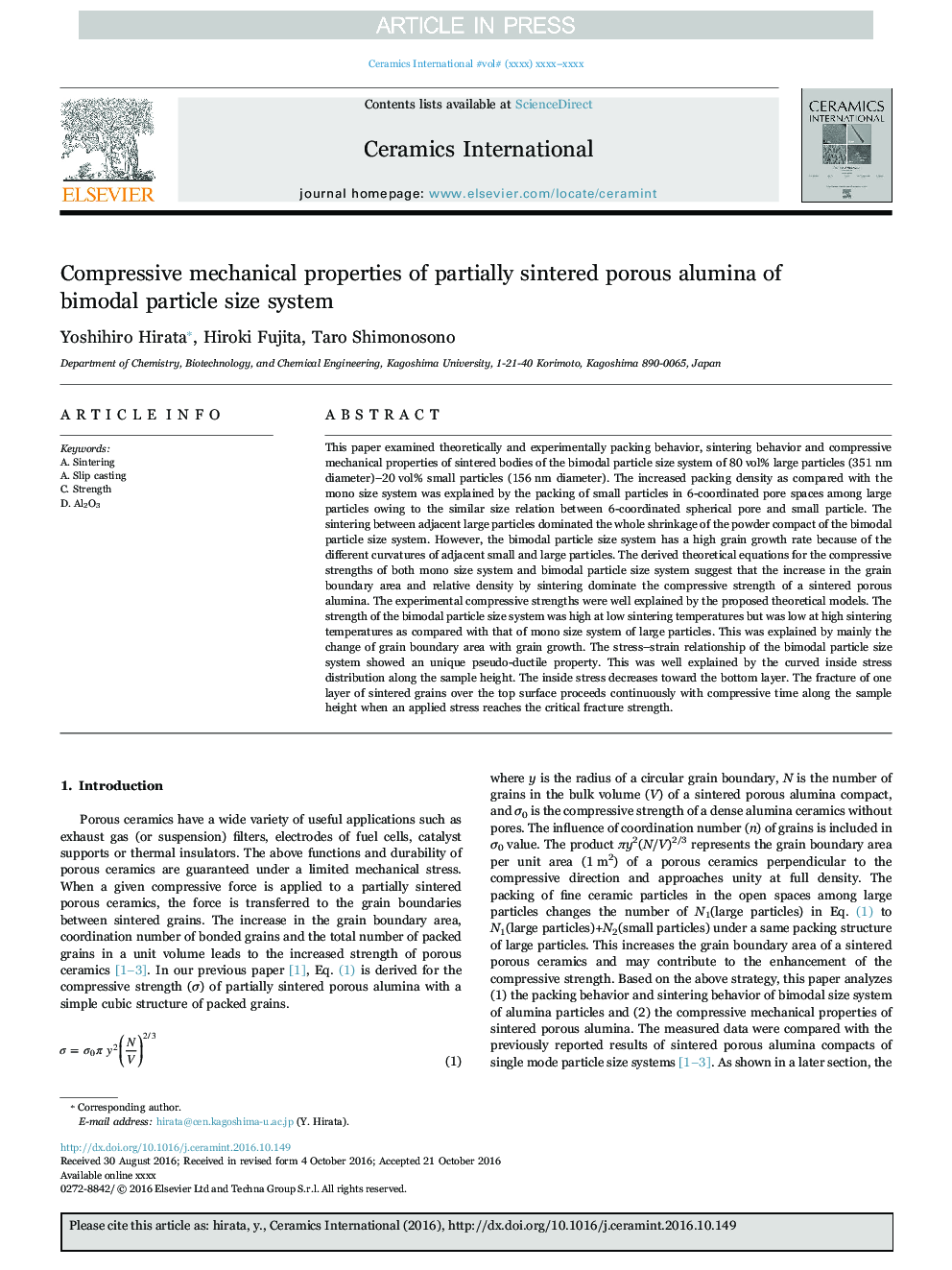| Article ID | Journal | Published Year | Pages | File Type |
|---|---|---|---|---|
| 5438238 | Ceramics International | 2017 | 9 Pages |
Abstract
This paper examined theoretically and experimentally packing behavior, sintering behavior and compressive mechanical properties of sintered bodies of the bimodal particle size system of 80Â vol% large particles (351Â nm diameter)-20Â vol% small particles (156Â nm diameter). The increased packing density as compared with the mono size system was explained by the packing of small particles in 6-coordinated pore spaces among large particles owing to the similar size relation between 6-coordinated spherical pore and small particle. The sintering between adjacent large particles dominated the whole shrinkage of the powder compact of the bimodal particle size system. However, the bimodal particle size system has a high grain growth rate because of the different curvatures of adjacent small and large particles. The derived theoretical equations for the compressive strengths of both mono size system and bimodal particle size system suggest that the increase in the grain boundary area and relative density by sintering dominate the compressive strength of a sintered porous alumina. The experimental compressive strengths were well explained by the proposed theoretical models. The strength of the bimodal particle size system was high at low sintering temperatures but was low at high sintering temperatures as compared with that of mono size system of large particles. This was explained by mainly the change of grain boundary area with grain growth. The stress-strain relationship of the bimodal particle size system showed an unique pseudo-ductile property. This was well explained by the curved inside stress distribution along the sample height. The inside stress decreases toward the bottom layer. The fracture of one layer of sintered grains over the top surface proceeds continuously with compressive time along the sample height when an applied stress reaches the critical fracture strength.
Related Topics
Physical Sciences and Engineering
Materials Science
Ceramics and Composites
Authors
Yoshihiro Hirata, Hiroki Fujita, Taro Shimonosono,
